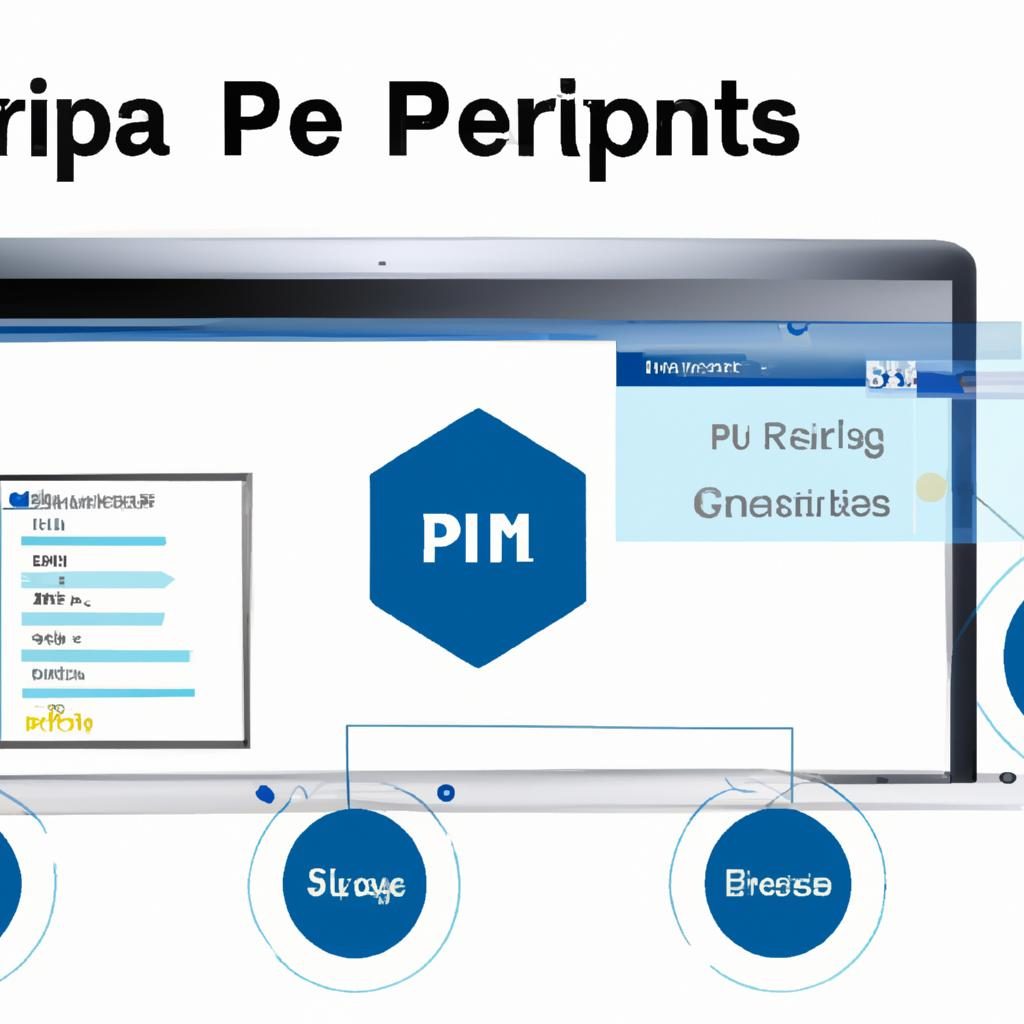In today’s fast-paced distribution industry, managing inventory, orders, and supply chains can be a daunting task. Fortunately, there’s a solution that can revolutionize your operations and take your business to the next level – erp software for distribution.
Why is ERP software so crucial for the distribution industry? Simply put, it provides a comprehensive and integrated approach to managing various aspects of your distribution business. From inventory management to order fulfillment and supply chain optimization, ERP software empowers you to streamline your processes, reduce costs, and enhance customer satisfaction.
So, what exactly is ERP software for distribution? ERP, or Enterprise Resource Planning, is a powerful software solution designed to consolidate and automate key business operations. Specifically tailored for the unique needs of the distribution industry, ERP software enables you to efficiently manage inventory, track orders, and coordinate with suppliers and vendors.
The benefits of implementing ERP software for distribution are immense. By leveraging the capabilities of ERP, you can gain real-time visibility into your inventory, accurately forecast demand, and optimize warehouse operations. Seamlessly processing orders, automating fulfillment, and managing returns becomes effortless with ERP software. Moreover, ERP streamlines your supply chain, enabling you to collaborate effectively with suppliers and make informed procurement decisions.
Imagine having the ability to reduce manual tasks and errors, enhance communication and coordination, and streamline workflows within your distribution business. With ERP software, this becomes a reality. You can say goodbye to time-consuming manual processes and embrace a more efficient and productive way of operating.
In the next section, we’ll delve deeper into the key features of ERP software for distribution and explore how they can transform your business. Get ready to discover a game-changing solution that will propel your distribution operations to new heights.
Key Features of ERP Software for Distribution

Efficiently managing inventory, orders, and supply chains is essential for the success of any distribution business. This is where ERP software for distribution comes into play, offering a range of key features that can revolutionize your operations.
A. Inventory management and tracking
1. Real-time inventory visibility
One of the major challenges in distribution is maintaining accurate and up-to-date inventory records. ERP software provides real-time visibility into your inventory, allowing you to track stock levels, monitor product movements, and avoid stockouts or overstocking. With this feature, you can make informed decisions about inventory replenishment, ensuring optimal stock levels at all times.
2. Demand forecasting and planning
Accurate demand forecasting is crucial for efficient inventory management. ERP software analyzes historical data and market trends to generate accurate demand forecasts, enabling you to plan inventory levels accordingly. By ensuring the availability of products when customers need them, you can minimize stock holding costs and maximize customer satisfaction.
3. Warehouse management
Warehouse operations can be complex, involving multiple processes such as receiving, picking, packing, and shipping. ERP software streamlines these operations by providing tools for efficient warehouse management. From organizing inventory locations to optimizing picking routes, ERP software helps you streamline your warehouse processes, reduce errors, and improve overall efficiency.
B. Order management and fulfillment
Efficiently managing orders and ensuring timely fulfillment is critical for customer satisfaction. ERP software simplifies order management with features designed to streamline the entire process.
1. Streamlining order processing
ERP software automates order processing, eliminating manual data entry and reducing the chances of errors. Orders can be seamlessly captured, verified, and processed, ensuring a smooth and efficient workflow. This feature allows you to process a higher volume of orders in less time, improving order accuracy and customer satisfaction.
2. Automating order fulfillment
ERP software automates the fulfillment process, from picking and packing to shipping. By integrating with shipping carriers, ERP software generates shipping labels, tracks shipments, and provides real-time visibility into order status. This automation not only saves time but also improves order accuracy and enables you to provide customers with accurate tracking information.
3. Managing returns and exchanges
Handling returns and exchanges is a crucial aspect of order management. ERP software simplifies this process by providing a centralized system to manage returns, track inventory, and process refunds or replacements. With this feature, you can efficiently handle customer returns, minimize processing time, and enhance customer satisfaction.
C. Supply chain management
Managing your supply chain effectively is vital for the smooth operation of your distribution business. ERP software offers robust supply chain management capabilities to optimize processes and enhance collaboration with suppliers and vendors.
1. Tracking and optimizing supply chain processes
ERP software allows you to track and monitor various stages of your supply chain, from procurement to delivery. This visibility enables you to identify bottlenecks, optimize processes, and ensure timely delivery of goods. By streamlining supply chain processes, you can reduce costs, improve efficiency, and enhance customer satisfaction.
2. Enhancing collaboration with suppliers and vendors
Collaboration with suppliers and vendors is essential for seamless supply chain operations. ERP software facilitates communication and collaboration by providing a platform for sharing information, exchanging documents, and streamlining procurement processes. With improved collaboration, you can build stronger relationships with suppliers, negotiate better terms, and ensure a reliable supply of goods.
3. Managing procurement and sourcing
Efficient procurement and sourcing are crucial for maintaining a competitive edge in the distribution industry. ERP software simplifies these processes by automating procurement workflows, tracking supplier performance, and analyzing procurement data. With better procurement management, you can make informed sourcing decisions, reduce costs, and improve the overall efficiency of your distribution operations.
In the next section, we will explore the advantages of implementing ERP software for distribution. Get ready to discover how this powerful tool can transform your business and drive success.
Advantages of ERP Software for Distribution
In the competitive world of distribution, gaining a competitive edge is crucial for success. This is where ERP software for distribution comes into play, offering a multitude of advantages that can significantly transform your business operations. Let’s explore how implementing ERP software can benefit your distribution business in three key areas.
A. Improved efficiency and productivity
1. Minimizing manual tasks and errors
With ERP software, you can bid farewell to time-consuming manual processes that are prone to errors. Automating various tasks such as order processing, inventory management, and warehouse operations not only saves time but also drastically reduces the risk of human errors. By eliminating manual data entry and automating repetitive tasks, your team can focus on more critical activities, resulting in improved overall efficiency.
2. Enhancing communication and coordination
Efficient communication and coordination are essential components of a successful distribution business. ERP software provides a centralized platform that facilitates seamless communication and collaboration across departments. From sharing real-time updates on order status to coordinating with suppliers and vendors, ERP software ensures everyone is on the same page, minimizing miscommunications and delays.
3. Streamlining workflows and processes
ERP software enables you to streamline your workflows and processes, eliminating bottlenecks and inefficiencies. By mapping out and automating your business processes within the software, you can optimize resource allocation, reduce lead times, and improve overall operational efficiency. With streamlined workflows, tasks are completed faster, allowing you to handle higher order volumes without compromising quality.
B. Enhanced customer service
1. Real-time order tracking and status updates
ERP software empowers you to provide your customers with real-time order tracking and status updates. Customers can conveniently track their orders, knowing exactly when their products will arrive. This level of transparency builds trust, enhances customer satisfaction, and sets you apart from competitors who lack this capability.
2. Improving order accuracy and on-time deliveries
Accurate order processing and on-time deliveries are key factors in ensuring customer satisfaction. ERP software automates order fulfillment processes, reducing the likelihood of errors and ensuring orders are shipped correctly and promptly. By consistently delivering orders on time and accurately, you establish a reputation for reliable service, boosting customer loyalty.
3. Providing personalized customer experiences
ERP software enables you to gather and analyze customer data, allowing you to personalize the customer experience. By understanding customer preferences, purchase history, and behavior, you can tailor your offerings, promotions, and communications to meet their specific needs. This personalized approach fosters stronger customer relationships and increases the likelihood of repeat business.
C. Data-driven insights and decision making
1. Generating accurate and real-time reports
ERP software provides robust reporting capabilities, generating accurate and real-time reports on various aspects of your distribution business. From inventory levels and sales performance to supplier performance and customer behavior, these reports offer valuable insights that help you make data-driven decisions. With access to accurate information at your fingertips, you can identify trends, spot opportunities, and address challenges promptly.
2. Analyzing sales and inventory data
Effective inventory management and sales analysis are critical for maintaining optimal stock levels and maximizing profitability. ERP software enables you to track and analyze sales and inventory data, identifying which products are selling well and which ones are underperforming. Armed with this knowledge, you can make informed decisions regarding replenishment, pricing, and product assortment, ensuring you always have the right products in stock.
3. Identifying trends and making informed decisions
ERP software equips you with the tools to identify trends and patterns within your distribution operations. By analyzing historical data and market trends, you can anticipate demand fluctuations, adjust your inventory levels accordingly, and stay ahead of the competition. With the ability to make informed decisions based on accurate data, you can steer your distribution business towards sustained growth and success.
In the next section, we’ll explore the essential factors to consider when choosing ERP software for distribution.
Factors to Consider When Choosing ERP Software for Distribution
When it comes to selecting the right ERP software for your distribution business, there are several crucial factors that you should take into consideration. By carefully evaluating these aspects, you can ensure that the ERP solution you choose aligns perfectly with your unique requirements and sets you up for long-term success. Let’s explore the key factors to keep in mind:
A. Scalability and Flexibility
As your distribution business grows, it’s essential to have an ERP software that can scale with your operations. Look for a solution that offers the flexibility to accommodate your expanding needs, whether it’s handling increased inventory volumes, managing additional warehouses, or supporting multiple sales channels. By choosing a scalable ERP system, you can future-proof your business and avoid the hassle of switching to a new software down the line.
B. Integration Capabilities with Existing Systems
Seamless integration between your ERP software and existing systems is vital to ensure smooth operations and avoid data silos. Consider the compatibility of the ERP solution with your current software stack, including accounting systems, CRM platforms, and e-commerce platforms. Look for software that offers robust integration capabilities, allowing you to consolidate data and streamline processes across different departments.
C. User-Friendliness and Ease of Implementation
Implementing a new ERP software shouldn’t be a daunting task. Opt for a solution that offers a user-friendly interface and intuitive navigation, making it easy for your employees to adapt quickly. Additionally, consider the implementation process. Look for ERP software that provides comprehensive documentation, training resources, and dedicated support to assist you in the smooth transition and minimize disruptions to your daily operations.
D. Customization Options
Every distribution business has unique requirements, and your ERP software should be able to accommodate them. Look for a solution that offers customization options, allowing you to tailor the software to your specific needs. Whether it’s custom workflows, reports, or dashboards, having the ability to personalize your ERP system ensures that it aligns perfectly with your business processes.
E. Vendor Support and Reputation
Choosing an ERP software vendor with a solid reputation and reliable support is crucial for a successful implementation. Look for vendors that have expertise in the distribution industry and a track record of delivering exceptional customer service. Read customer reviews, ask for references, and ensure that the vendor offers timely support and ongoing updates to keep your ERP software up to date and secure.
By considering these factors, you can make an informed decision when selecting an ERP software for your distribution business. Remember, it’s crucial to choose a solution that not only meets your current needs but also supports your future growth and success.
Case Studies: Successful Implementation of ERP Software in Distribution
A. Company A: Increased Efficiency and Reduced Costs
Company A, a leading distributor in the industry, faced challenges in managing their vast inventory and optimizing their operations. They decided to implement ERP software for distribution, and the results were astounding. By leveraging the power of ERP, Company A experienced a significant increase in efficiency and a notable reduction in costs.
With the real-time visibility provided by ERP software, Company A gained a comprehensive understanding of their inventory levels and demand patterns. This allowed them to optimize their stock levels, ensuring they always had the right products in the right quantities. By avoiding overstocking or stockouts, Company A minimized carrying costs and lost sales, resulting in substantial cost savings.
Moreover, ERP software automated many manual tasks and streamlined workflows within the organization. Processes such as order processing, invoicing, and reporting were automated, reducing the time and effort required to complete them. This improved efficiency not only saved time but also freed up resources for more value-added activities, contributing to overall cost reduction.
B. Company B: Improved Customer Satisfaction and Loyalty
For Company B, customer satisfaction and loyalty were paramount. They recognized the importance of providing a seamless and personalized experience to their customers. By implementing ERP software for distribution, they were able to achieve just that.
ERP software enabled Company B to enhance their order management and fulfillment processes. With real-time order tracking and status updates, they could keep their customers informed at every step of the journey. This transparency and reliability significantly improved customer satisfaction, as customers felt more in control of their orders.
Additionally, ERP software allowed Company B to improve the accuracy and timeliness of their deliveries. By automating order fulfillment, they reduced errors and improved the speed of order processing. This meant that customers received their orders faster and with greater accuracy, leading to higher levels of satisfaction and repeat business.
C. Company C: Streamlined Supply Chain Processes
Company C faced challenges in managing their complex supply chain. They had multiple suppliers and vendors to coordinate with, which often resulted in delays and miscommunication. To overcome these challenges, Company C implemented ERP software for distribution, resulting in streamlined supply chain processes.
With ERP software, Company C gained a centralized platform for managing their suppliers and vendors. They could easily track and monitor the performance of each partner, ensuring timely deliveries and quality products. The software facilitated effective collaboration, allowing for seamless communication and information sharing between all stakeholders.
By optimizing their supply chain processes, Company C reduced lead times and improved overall operational efficiency. This translated into faster order fulfillment and increased customer satisfaction. With ERP software in place, Company C experienced a significant improvement in their supply chain management, ultimately driving their business forward.
Stay tuned for the next section, where we’ll explore the factors to consider when choosing the right ERP software for your distribution business.
Conclusion
In conclusion, ERP software for distribution is a game-changer for businesses in the distribution industry. By implementing this powerful solution, you can streamline your operations, boost efficiency, and stay ahead of the competition.
ERP software offers a multitude of benefits, including real-time inventory visibility, streamlined order management, and optimized supply chain processes. With its ability to automate tasks, minimize errors, and enhance communication, ERP software significantly improves efficiency and productivity within your distribution business.
Not only does ERP software revolutionize your internal processes, but it also enhances customer service. Real-time order tracking, improved order accuracy, and personalized experiences contribute to increased customer satisfaction and loyalty. By leveraging data-driven insights and generating accurate reports, you can make informed decisions that drive your business forward.
When choosing ERP software for distribution, consider factors such as scalability, integration capabilities, user-friendliness, customization options, and vendor support. These factors will ensure that the software aligns with your unique business needs and enables seamless implementation.
In conclusion, erp.nganhangviet.org offers a wide range of ERP software solutions for distribution businesses. Take the next step in optimizing your operations and explore the ERP software options available. Empower your business with the tools it needs to thrive in the dynamic distribution industry.
Remember, the world of distribution is rapidly evolving, and staying competitive requires embracing innovative solutions. ERP software for distribution is the key to unlocking efficiency, productivity, and growth. Don’t wait any longer – leverage the power of ERP software and watch your distribution business soar to new heights.

